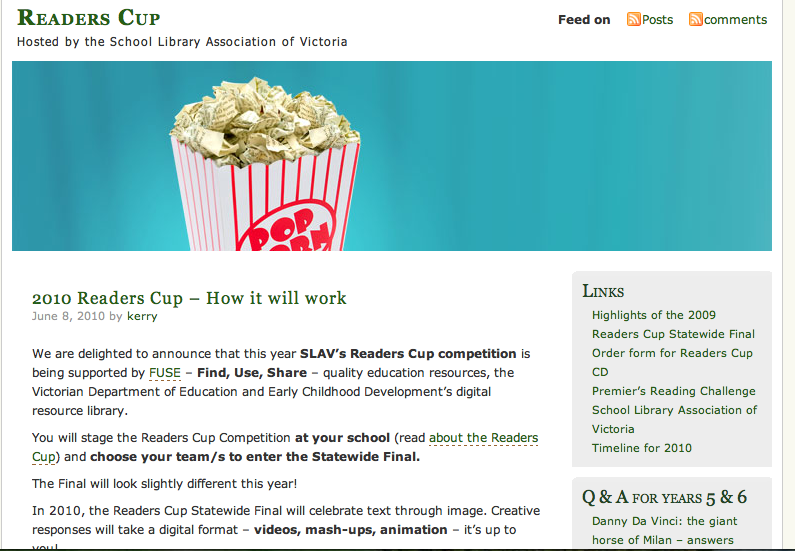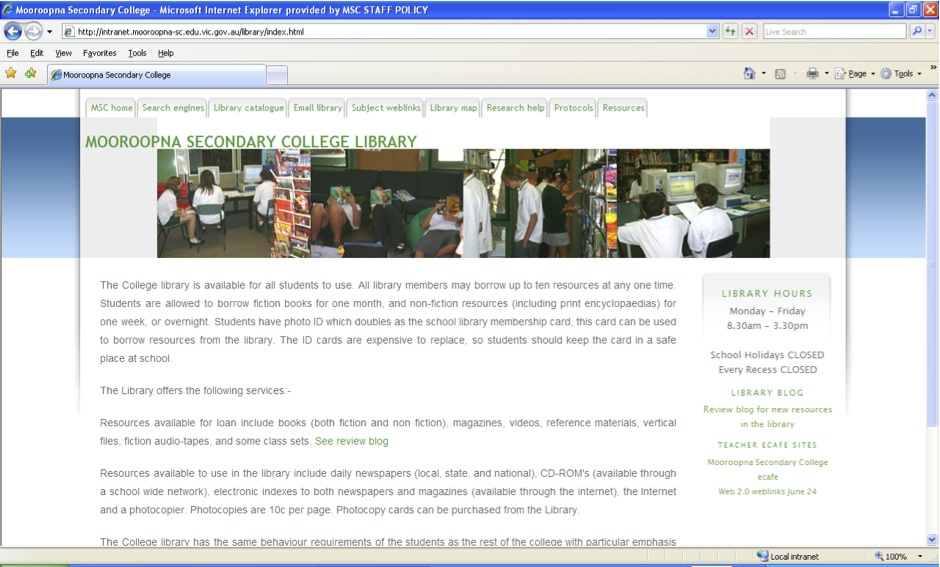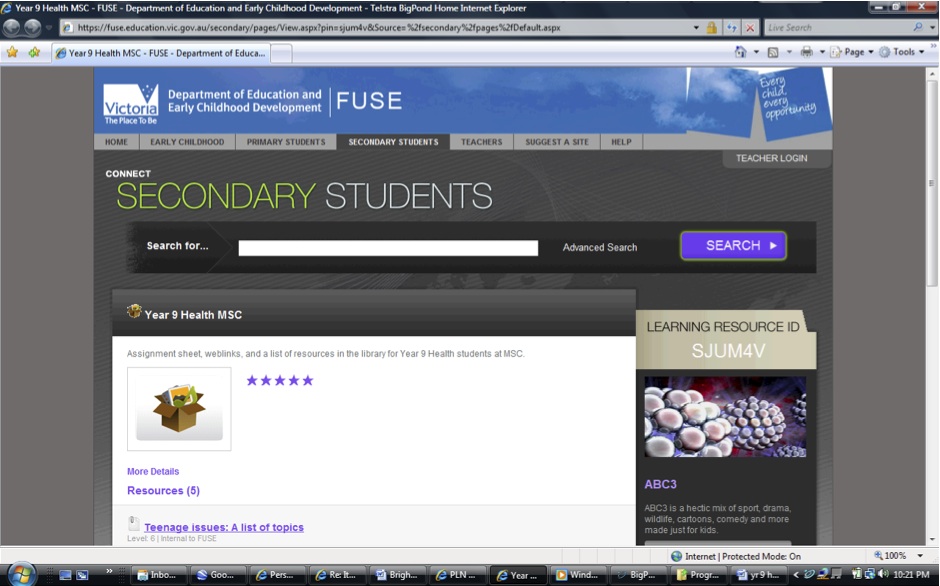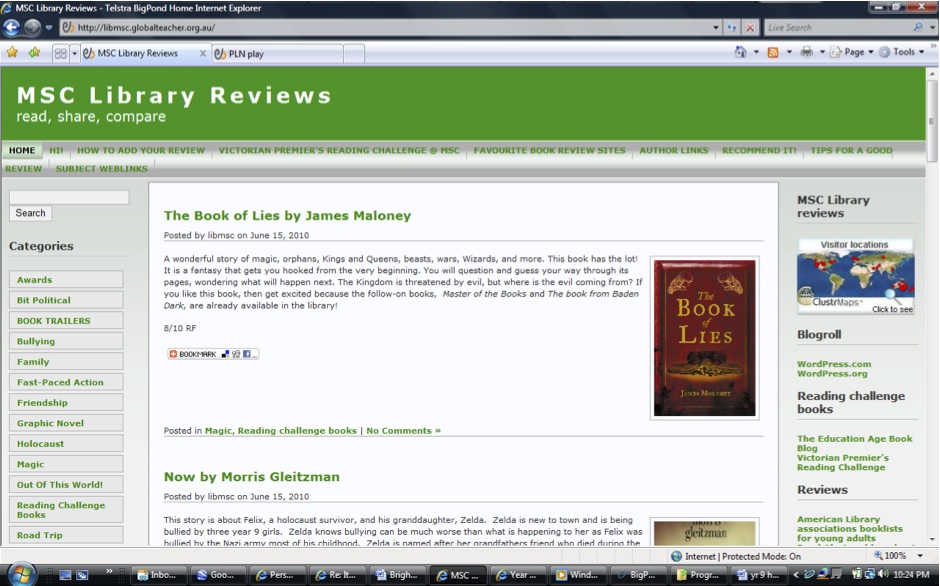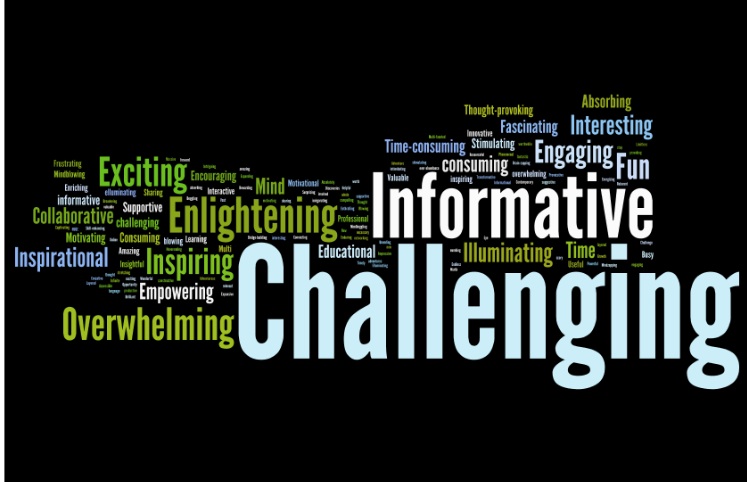An important article was published in last week’s Age newspaper on the wonderful teacher librarians in our schools. Well done to all involved to highlight the issues schools are facing and to outline what our job really does involve.
Tag Archives: SLAV
Dr Joyce Valenza @ SLAV
On Friday 30th July, hundreds of educators packed the School Library Association of Victoria Make, Share, Do conference held at the Olympic Room at the Melbourne Cricket Ground to hear groundbreaking teacher librarian Dr Joyce Valenza speak about Library 2.0.
Readers’ Cup blog
The School Library Association of Victoria has developed a blog to support the running of the Readers’ Cup in Victorian schools.
Featuring details of entry, rules and procedures, the blog also has links to a number of questions and answers for books for students in years 5 & 5, 7 & 8 and 9 & 10.
Sponsored by FUSE, the Readers Cup is an excellent way to enthuse students about reading, as this year’s State Final involves students making films about the selected books.
Mooroopna Secondary College Library
Teacher librarian Rachel Fidock, has been involved in an exciting library program at Mooroopna Secondary College. There has been a lot of work put into development of social media and Rachel explains more:
I am proud to be a member of Mooroopna Secondary College’s Library staff consisting of three Teacher-Librarians (myself, Leonie Dyason, and Ruth O’Bree) and one Library Technician (Julie Jenkins). In a supportive, professional environment I am able to embrace one of the most important roles of a teacher-librarian – providing knowledge of ICT tools that will enhance teaching and learning and provide our students with the ICT skills of multi-literacy, adaptability, discovery, and social networking required in the 21st Century. By incorporating popular Web 2.0 tools in the delivery of library resources, we also increase the level of student interest in the library, their learning, and the building of their knowledge. Programs such as the Personal Learning Network for Victorian Schools (which three of our staff are undertaking), and other professional development opportunities by SLAV, are perfect for this. Not only can I learn about Web 2.0, I am also able to collaborate with like-minded educators.I began working for MSC in 2007. I have been involved in many exciting library developments. Below are some of these:The library website confirms the importance of the library in the school community by giving it a virtual identity. The website provides many resources for staff and students, including search engine tips, subject weblinks, the library catalogue, and research help.Subject weblinks: These are created to assist students in their research. The page informs students where to find resources in the library shelves and online, and how to cite an internet page. Most internet sites come from FUSE, and those that do not are suggested to FUSE. The weblinks pages are created in collaboration with teachers. I inform the teacher of the benefits of the weblinks page (i.e. a weblinks page aids in research, provides age appropriate and reliable sites, and is useful for struggling students), and wait for their approval of a draft before it is published on the library website. We inform students of their existence and remind teachers that this resource is available for future assignment topics.FUSE packages:With the growth of FUSE our subject weblinks are also improving. We have created some resource packages using FUSE which include the subject weblinks page, a note-taking help sheet, a bibliography help sheet, and the assignment cover sheet. Creating resource packages in FUSE allows student access to these resources from home (for those who have the internet), whereas the library website is only accessible via the school intranet. To view all of our packages, have a look at Leonie Dyason’s FUSE presentation. Again, these packages are created in collaboration with the classroom teacher. The students are given the code to the resource package so they can use it for quick information retrieval.MSC Library Reviews blog:This review blog was created to encourage the school community to discuss and share literature experiences and to make a connection between the library and the wider school community. As well as reviews and tips to writing good reviews, there are book trailers created by our library staff, links to the Victorian Premier’s Reading Challenge, favourite review sites, author links, and a place for visitors to recommend improvements to the blog and library.I have advertised the existence of the blog via the daily student bulletin, with requests for any reviews, put notices and reviews in the school newsletter, informally discussed the blog with students, and have signs in the library encouraging contributions to the blog. I am also in the process of putting the subject weblinks on the blog, as another access point for students, with the added bonus that the students have to look at the blog to get to the weblinks. Currently, we are encouraging students to write blog reviews for us and will regularly review our processes and the success of the blog in reaching students.Book trailers: When I first saw a book trailer I thought that it was such a fantastic way to entice students to read. A book trailer provides the visual stimulation to encourage the further exploration of the storyline. For poor or reluctant readers, it can create the images needed to bring the story to life. We started creating book trailers to show in the library. We can show them on our IWB but think a more central, looping screen might be better. We also decided the review blog is the perfect location to show these trailers. We use only creative commons-licensed pictures on Flickr, and although we were putting them together using Windows Movie Maker, Julie Jenkins has started using Animoto to really bring the novel to life. You can view the book trailer Julie created for Swerve on our review blog now.
PLN Program Round 2
Create your own video slideshow at animoto.com.
The School Library Association of Victoria in partnership with the State Library of Victoria present the PLN – Personal Learning Network program. This program is funded as part of the digital education content initiatives and strategies of the Victorian Department of Education and Early Childhood Development.
Your PLN is a reciprocal learning system designed just for you!
- Create your own personalised learning network and share information, opinions and experiences with like-minded people from across the globe,
- Apply a little intelligent filtering to the information overload out there,
- Learn from others and contribute to others’ learning,
- Connect around ideas that you are passionate about.
Find out how you can use the web 2.0 environment to:
- Expand your personal learning network,
- Manage the information that web 2.0 provides,
- Use web 2.0 for learning and teaching,
- Develop your skills and experience in a web 2.0 environment.
This twelve week online program, enhanced with regular Elluminate how-to sessions, exemplars, and online mentoring offers you a hands-on experience of a range of web 2.0 tools and activities.
This program is designed for novices to the web 2.0 world as well as those who wish to further explore this interactive web environment.
When: Commencing Monday 26 2010
Who: Teacher-librarians, teachers and library team members
How: Work at your own pace, explore new things week by week, share your learning as a team!
Why: So that you build a network of trusted sources for learning and collaboration.
Cost: $175 per person for SLAV members – team discounts apply!
The registration form is now available here!
Have a look at the Wordle of how Round 1 participants described the PLN:
Please join us!
Submissions for the Inquiry into school libraries and teacher librarians in Australian schools
Submissions and proof transcripts from the Melbourne hearing are now available.
Please click here for the School Library Association of Victoria submission.
Report from the Melbourne hearing of the House of Representatives Standing Committee on Education and Training for the Inquiry into School Libraries and Teacher-librarians
This information comes from Mary Manning, the Executive Officer of the School Library Association of Victoria:
The School Library Association of Victoria was pleased to be able to appear before the House of Representatives Standing Committee on Education and Training Public Hearing for the Inquiry into School Libraries and Teacher-librarians in Australian schools today. The committee indicated that they found the SLAV submission to be most informative and questioned the SLAV representatives, Mary Manning and Susan La Marca in relation to aspects of the submission as well as areas of interest to them. Click here for the introductory statement that we made. We were also able to provide committee members with copies of , What a teacher-librarian can do for you, Open the door to inquiry: A planning tool for teacher-librarians and teachers in primary schools, and Rethink: Ideas for inspiring school library design. The hearing was webcast (audio only) and the transcript will be available in the near future along with the submissions that the Committee received, at: http://www.aph.gov.au/house/committee/edt/schoollibraries/index.htm
Also appearing today to support the valuable role of school libraries and teacher-librarians were representatives from the Australian Library and Information Association (ALIA), Monash University, VALA – Libraries/Technology and the Future, and the Victorian Catholic Teacher-Librarian Network.
Following the hearing, SLAV representatives were pleased to speak further with the Chair of the Committee, Sharon Bird, MP and with Karen Bonanno, Executive Officer, Australian School Library Association.
Parliamentary Inquiry into school libraries and teacher-librarians
An update on The Parliamentary Inquiry into school libraries and teacher-librarians.
The School Library Association of Victoria have also been invited to provide further oral evidence at the hearing of the committee which takes place on Thursday 29 April (today) at Parliament House, Melbourne.
It is a public hearing – however if you are unable to attend, the hearing will be webcast live (audio only) on: http://webcast.aph.gov.au/livebroadcasting/
If you are unable to catch the webcast, the hearing proof transcript will be on the Committee’s website approximately a week after the hearing. Submissions will also be published on the Committee’s website at some stage in the future.
Ed Tech Crew
Producing podcasts on educational technology, the Ed Tech Crew are Victorian based educators.
Darrell Branson and Tony Richards produce weekly podcasts on a wide variety of topics and have hosted a number of interesting guests such as:
- SLAV’s Mary Manning on the Australian Inquiry into Teacher Librarians
- Brendan O’Brien on cybersafety
- Jenny Luca
- Will Richardson
and many more.
Listen to the podcasts on the way to work or while you are doing the ironing, but make sure you don’t miss them!
Celebrate Change: Conference and Blog
On Monday 22 March, the School Library Association of Victoria hosted a conference entitled “Celebrate Change: Let’s Make the Whole School a Library“.
Now the presentations, links and podcasts from the day are freely available to everyone via the Celebrate Change blog.
It was an extremely stimulating and informative day and delegates and other interested people are welcome to visit the blog to add comments and access presentations.

